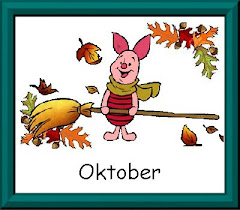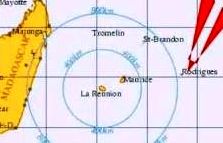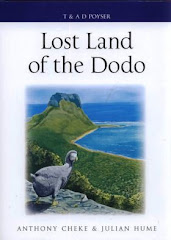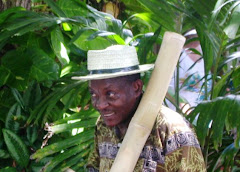There are about 187,000 people in the US, in Germany 55,000, and 4 million people in the world who were born on Leap Day, all asking the same question...))
Ein Tag wie jeder andere, ein Tag, an dem geboren und gestorben wird, man verliebt sich oder auch nicht, und auch vor Katastrophen ist man nicht gefeit, ebensowenig wie vor Serienmördern, die an diesem Tag geboren sein können. Und doch hat dieser Tag etwas, und durch den 4jährigen Abstand seines Auftretens ist er geradezu magisch für alle, die an diesem Tag Geburtstag feiern.Morgen ist es wieder soweit. Endlich muss sich mal nicht der 1. März geteilt werden. Endlich ist man bei sich, seinem Tag angekommen.Oder man macht ihn zu seinem Tag, indem man heiratet.Doch wieso gibt es ihn eigentlich wirklich nur alle 4 Jahre? Wer darauf eine Antwort sucht, findet sie in Günter Eichs Märchen "Der 29.Februar".-
Einst lebte die böse Königin Marzipilla, die auf das Erbe ihrer Stieftochter Prinzessin Klara eifersüchtig war und es für ihr eigenes Kind wollte. So befahl die Königin den Tod des Mädchens, doch Klara konnte rechtzeitig fliehen.
Auf ihrer Flucht trifft die Prinzessin auf den 28. Februar, der ihr seine Hilfe anbietet. Also macht sich die Prinzessin auf den Weg und sucht den Unterschlupf der 365 Brüder. Doch diesen darf sie nur als einen Tag betreten. So begibt sich Klara zur Sonne und fragt diese, ob sie nicht schneller wandern könnte, so dass man im Kalender noch einen Tag hinzufügen könnte. Die Sonne, schon alt und schwach, überlegt wie sie diese schwere Aufgabe bewältigen kann. Schließlich macht sie Prinzessin Klara und den 365 Brüdern ein Angebot...
Übrigens, und das hat mir besonders gut gefallen neben der Tatsache, dass Klara nun als 29. Februar sicheren Unterschlupf bei den 365 Brüdern findet, auch der dem Vater treu ergebene Diener durchkreuzt die finsteren Pläne der heimtückischen Königin. Statt des Prinzessinnenherzens, welches er jagen sollte, bringt er Marzipilla das Herz einer Wildsau zum Verzehren, woraufhin sich das böse Weib in ein Wildschwein verwandelte....
Klaras Vater widerum ist so betrübt, dass er seine geliebte Tochter nun nur noch alle 4 Jahre wiedersieht, dass er sich der Völlerei hingibt, fortan verschlingt er ganze Berge von Geflügel, Braten, Bohnen, Klößen, große und kleine Kuchen, weißen und roten Wein.-
Once upon a time there was a wicked queen called Marzipilla who was jealous of the legacy of her stepdaughter, Princess Clara, which she wanted to claim for her own child. So the queen ordered the girl's death, but Clara could escape in time. On her flight, she meets the 28th February, offering her his help. So the princess sets off and seeks the shelter of the 365 brothers. But oops, she is only allowed to enter the shelter as a day. So Klara moves then to the sun and asks her whether or not she could move faster in order to add one more day in the calendar. The sun is already old and weak, and after thinking hard about how she could cope with this difficult task, she finally makes Princess Clara and the 365 brothers an offer....
Auf ihrer Flucht trifft die Prinzessin auf den 28. Februar, der ihr seine Hilfe anbietet. Also macht sich die Prinzessin auf den Weg und sucht den Unterschlupf der 365 Brüder. Doch diesen darf sie nur als einen Tag betreten. So begibt sich Klara zur Sonne und fragt diese, ob sie nicht schneller wandern könnte, so dass man im Kalender noch einen Tag hinzufügen könnte. Die Sonne, schon alt und schwach, überlegt wie sie diese schwere Aufgabe bewältigen kann. Schließlich macht sie Prinzessin Klara und den 365 Brüdern ein Angebot...
Übrigens, und das hat mir besonders gut gefallen neben der Tatsache, dass Klara nun als 29. Februar sicheren Unterschlupf bei den 365 Brüdern findet, auch der dem Vater treu ergebene Diener durchkreuzt die finsteren Pläne der heimtückischen Königin. Statt des Prinzessinnenherzens, welches er jagen sollte, bringt er Marzipilla das Herz einer Wildsau zum Verzehren, woraufhin sich das böse Weib in ein Wildschwein verwandelte....
Klaras Vater widerum ist so betrübt, dass er seine geliebte Tochter nun nur noch alle 4 Jahre wiedersieht, dass er sich der Völlerei hingibt, fortan verschlingt er ganze Berge von Geflügel, Braten, Bohnen, Klößen, große und kleine Kuchen, weißen und roten Wein.-
Once upon a time there was a wicked queen called Marzipilla who was jealous of the legacy of her stepdaughter, Princess Clara, which she wanted to claim for her own child. So the queen ordered the girl's death, but Clara could escape in time. On her flight, she meets the 28th February, offering her his help. So the princess sets off and seeks the shelter of the 365 brothers. But oops, she is only allowed to enter the shelter as a day. So Klara moves then to the sun and asks her whether or not she could move faster in order to add one more day in the calendar. The sun is already old and weak, and after thinking hard about how she could cope with this difficult task, she finally makes Princess Clara and the 365 brothers an offer....
By the way, and I particularly liked that, not only that Clara could be saved by becoming the 29th of February, also the servant, faithful to her beloved father, crossed the sinister plans of the treacherous queen. Instead of the princesses' heart which he was supposed to hunt, he brought her the heart of a wild boar.Once digested by Marzipilla, the angry woman was transformed into a boar ...
As to Clara's father, he is so saddened about seeing his beloved daughter from now on only every 4 years that he seeks solace in full, devouring mountains of poultry, beef , beans, dumplings, large and small cakes, white and red wine...
Ob Klaras Vater noch einmal geheiratet hat, entzieht sich unserer Kenntnis. Nur für alle Fälle, sollte es in einem Schaltjahr gewesen sein, dann kann es durchaus wie oben abgebildet zugegangen sein.Denn nachdem Schaltjahre nicht mehr wie bei den Römern mit Unglück assoziiert wurden, in denen z.B. keine Weinberge neu angelegt werden durften, setzten sich ganz andere Bräuche durch. So entwickelte sich bspw.ausgehend von Irland im 5.Jahrhundert der Brauch, dass junge Frauen in Schaltjahren ihren Freunden einen Heiratsantrag machen durften. Sonst war das gegen jede Konvention und somit undenkbar. Heiraten im Schaltjahr war also Sache der zukünftigen Braut.
Das zeigt sich auch im süddeutschen Brauchtum.
Dort ist es sehr beliebt, seiner Liebsten am ersten Mai eine kleine,
bunt geschmückte Birke als Liebesbeweis in den Vorgarten zu stellen. Im
Schaltjahr jedoch sind die Frauen dran und dürfen den Baum im Garten
ihres Auserwählten aufstellen.(source)
Whether Princess Clara's father has married again, is beyond our knowledge. Just in case, had it been in a leap year, then it may well have happened as depicted above. After leap years were not associated any longer with bad luck and disaster, as it shows for example in Roman times when vineyards were not to be created then, completely different traditions followed.
"According to an old Irish legend, or possibly history, St Bridget struck
a deal with St Patrick to allow women to propose to men – and not just
the other way around – every 4 years. This is believed to have been
introduced to balance the traditional roles of men and women in a
similar way to how Leap Day balances the calendar.
In some places, Leap Day has been known as “Bachelors’ Day” for the same
reason. A man was expected to pay a penalty, such as a gown or money,
if he refused a marriage proposal from a woman on Leap Day. In many
European countries, especially in the upper classes of society,
tradition dictates that any man who refuses a woman's proposal on
February 29 has to buy her 12 pairs of gloves. The intention is that the
woman can wear the gloves to hide the embarrassment of not having an
engagement ring. During the middle ages there were laws governing this
tradition."(source)
Und was Klara betrifft, nun wissen wir, mit was sie zumindest an einem dieser Tage beschäftigt war, wenn sie dann mal nicht ihren Vater gesehen hat...)) -
And as to Clara, now we know what she was doing on one of those days, when she had not been seeing her father...))
All the best to all born on 29th of February
with some extra-special kisses to Brigitte in Berlin -
Enjoy YOUR day!
Enjoy YOUR day!














.kl.jpg)


































